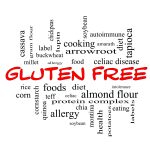Cooking with oils – what’s the right advice?
What Are Fats and Oils?

Fats and oils are carbon-based molecules occurring in long chains called fatty acids. We use fats in our cell walls, and we make hormones and vitamin D from cholesterol. Our bodies also use fat stores to keep us warm and as a long-term energy source. Now our brain is about 2/3 fat. So, we need lots of healthy fats to keep our brain in good working order.
Fats come in different types – saturated, mono-unsaturated and poly-unsaturated. Generally animal fat from meat, lard or dairy products is saturated, while vegetable oils tend to be unsaturated (coconut and palm oil are the exception). Saturated fats like butter and coconut oil tend to be solid at room temperature, while unsaturated fats like olive oil are liquid at room temperature.
Saturated fat is ok for health

In 2015, a meta-analysis study published in the BMJ, showed saturated fat was not associated with heart disease, stroke or Type 2 Diabetes (1). This study looked at over 20,000 different research studies to find the definitive answer to the question. Now that we have the answer, many people are confused about how to use saturated fat in their diet. Habits range from downing a tablespoon of coconut oil every morning to tentatively spreading a little butter on their toast.
We have become so brainwashed that fat is bad for us, that some people cannot even look at fat within feeling nauseous. Many people can’t eat fat or oils because their bodies are so unused to eating fat, that they have difficulty digesting it. No wonder so many people have gallstones, their poor gallbladder (which helps digest fat) never gets a decent workout.
There is a lot of advice to cover when advising people how to eat healthy oils, so in this post, we’ll just focus on how to cook with oil.
Using Oil for Cooking
What’s important about cooking with oil is the smoke point and resistance to oxidation.
- Smoke point. In cooking, the smoke point of an oil or fat is the temperature at which it begins to break down to glycerol and free fatty acids. At that time, it produces bluish smoke. The glycerol is then further broken down to acrolein, which is the part of the smoke that irritates our eyes. The smoke point also marks the point at which the flavour and the healthiness of the fat deteriorates. Many vegetable oils have low smoke points such as canola and sunflower oil. Therefore it’s really important to choose the oil you cook with carefully.
- Resistance to oxidation. Unsaturated fats are more unstable when heated such as polyunsaturated vegetable oils e.g. soybean oil, canola. When these oils are overheated, they can form harmful compounds which can contribute to cancer. Saturated and monounsaturated fats are more resistant to oxidation.
Extra virgin olive oil has a relatively high smoke point and resistance to oxidation as its mostly monounsaturated fat, not polyunsaturated.

What’s great for high heat cooking?
Ghee is clarified butter and can be heated up to 250oC. When mixed with olive oil, it can raise the smoke point of olive oil. In France, they often mix butter and olive oil together for cooking, which gives food a great Mediterranean flavour. For Asian cooking, coconut oil is great for frying. Rice bran oil also has a high smoke point as well as avocado oil.
Industrial refinement changes the smoke point of oils, so try to use the most natural version you can find. As in everything, the better quality oil you use, the less harmful effects so buy organic when you can. Heating olive oil may also reduce some of its anti-oxidants so make sure to include raw extra virgin olive oil on salads etc too. By eating healthy oils every day, your body will get used to using oil for energy, and also you’ll get all the other health benefits too.

